Xiaomi Mi 11 vs OnePlus 8T: Which should you buy? By Pocket-lint
When, it comes to buying a flagship phone for most people that usually means choosing between the latest iPhone or the latest Samsung phone, but there are other compelling flagship phones on the market too, and two of them come from OnePlus and Xiaomi and their latest devices. Those are, of course, the 11 and the OnePlus 8t look down the spec sheet and the numbers- and you might just conclude that the Xiaomi gets an easy win on this one. But, as we know from using devices over the years, the spec sheets only tell part of the story. It comes down to a lot more than just that, and there's also the price to consider Xiaomi's is a little more expensive so which should you buy I'm km Bunsen from pocket lint, and I'm hoping to help you decide over the next few minutes and while you're here it'd be tremendous. If you hit that, like button subscribe and tap the little bell to make sure you don't miss any more of our videos, so one thing that can be said about Xiaomi's design is that the manufacturer has pushed the envelope when it comes to making its phone at least look different to others on the market that triple layer, camera housing with a contrasting ring and black pill shaped under layer makes it instantly unique against the OnePlus with its relatively standard rectangle housing, and they don't feel all that. Different, though both feature a similar curved glass back.
But the texture between these two specific models is different. Xiaomi's frosted glass is softer to the touch, although it is ever so slightly longer wider and heavier than the OnePlus, but there's not a lot in it not enough to make a huge difference on a daily basis, turn them over to the front, and you'll notice. A few more differences, primarily Xiaomi's curved glass on the edges, OnePlus went for a completely flat display, with only subtle curving at the bezel, which is similarly slim on both devices. Saying that look closely, and you'll notice that Xiaomi's are skinnier and that the punch hole camera takes up a little less space in the panel and while curved screens are technically more advanced than flat ones, Xiaomi's implementation does mean it suffers from accidental touches holding the phone in landscape. I often found myself struggling to get my deliberate touches to register.
As an unknown to me, part of my palm was touching the edge of the screen. It also has a bit of an uneven look thanks to the curves in the screen, not quite matching the curves of the corners. Both phones support dual sim, and neither of them has a micro SD card slot, so you're stuck with the storage inside the phone, but in both cases that's pretty generous you'll get either 128 gigabytes or 256. Look at the display, specs and there's. Surely only one winner here right well, not necessarily Xiaomi's is the more advanced technically and has a sharper maximum resolution, pushing it to more than 500 pixels per inch compared to 400 pixels per inch on the OnePlus.
It is quad HD over full HD. After all, that means on finer details when you look closely, the Xiaomi will look crisper despite similar peak brightnesses. However, the OnePlus screen does seem a little brighter and more vivid when both pushed to maximum brightness. However, once you start watching videos side by side with both in their default setting, looking at my own skin tone, look particularly noticeably pinker on the OnePlus display with the Xiaomi looking a lot more natural. The two phones offer plenty of calibration tools, though, so you should be able to get them looking the way you want, but there's really not a huge amount in this, and while zombies is technically better overall I'd be perfectly happy to game and watch movies and TV shows on either display.
In fact, sometimes the flatter display is more preferable, especially if you don't like seeing your videos curving over the edges. Both offer super smooth, 120hz refresh rate, so you'll get smooth sharp animation, whatever you're doing providing that whatever app you're in is optimized to run at fast speeds. Now, when it comes to software, we have to say that oxygen, OS 11, has been more reliable and less intrusive. Of the two both are similarly fluid and fast, with similar features, like always on displays when your phone's in standby, but Xiaomi has this habit of double-checking your play, store downloads whenever you're installing an app to make sure it's safe. So if you have apps downloading in the background, it can be pretty frustrating to get that pop up on your screen.
All the time more obtrusive, however, is that all apps are pushed to reserve battery mode by default, meaning that unless you go into settings and give them unreserved access, you'll miss notifications. If you don't tinker in settings to allow them permanent ability to run, you have to physically open the apps to check if you have any messages or updates. Add to that the fact that OnePlus the latest version of oxygen is more suited to one hand, use thanks to bringing controls to a more thermable level, and you have a software. That's a lot more pleasurable to use now with performance, there's not a huge amount to say, except that both phones are really quick and able to run the most demanding games and apps without a worry. Xiaomi has the upper hand slightly since it uses Qualcomm's latest triple a processor, but with similar memory and ram levels and speed, you likely won't notice.
A huge amount of difference on a daily basis run a benchmark, and you will, but you'll never have to worry about demanding games with either of the phones. Similarly, battery life will comfortably get even the most demanding users through a full day. You get similar capacities, it's four and a half thousand versus four thousand six hundred William hours on the two phones. Although OnePlus is the smaller of the two still with its lower resolution display, it doesn't seem to use it up quite as quickly when doing visually intensive activities and when it comes too fast charging. OnePlus wins this one with 65 watt warp charge that can completely refill the battery in under 40 minutes.
Still Xiaomi is no slouch, and not only can it do a full charge in 45 minutes. It has fast 50 watt wireless charging too, provided you get Xiaomi's bespoke, compatible wireless charger. OnePlus features, no wireless charging, that's still reserved for just the OnePlus 8 pro currently so onto cameras, and while resolution and sensor sizes are different, the makeup of the two camera systems are very similar. There's a primary lens alongside the ultra-wide and macro lenses. OnePlus also has a depth sensor, which is essentially useless on its own.
It's just for extra data. Now neither phone has a proper telephoto zoom lens, but both will let you zoom further using a digital, zoom Xiaomi's. Let you go pretty far too, but once you push either past the five times zoom mark the results get really ropey fast. The one thing we did notice was that, while both take sharp vivid pictures in daylight, the Xiaomi's were consistently darker and more contrast, heavy. Sometimes that made them appear too dark and crushed with the OnePlus.
Looking a little more lifelike and natural other times. The OnePlus look comparatively washed out. As for macros, it's tricky getting a sharp in focus shot with either phone, but the Xiaomi can take fantastic. Looking macros, if you get up close zombies, tend to magnify the macros a lot more but, more importantly, the macro shots on the me11 consistently had a much nicer and smoother natural background. Blur OnePlus was noisy and grainy and just looked really harsh a lot of the time and as for night mode, both phones have it, and you can use it on both the primary and ultra-wide cameras.
But the ultra wide are nowhere near as effective as drawing in light on either phone results were a little inconsistent with the OnePlus, often struggling to focus and evening out the minor handshake. But when it did, it often delivered better color, dynamic range and detail than the Xiaomi. However, the me11 was often better at focusing on producing a sharper image, especially when light levels got really low, even if the colors are a little cooler and washed out some time. As for selfies, the Xiaomi looked generally a lot less natural and too smooth compared to the OnePlus in both daylight and at night, using the screen as a flash. So all in all Xiaomi may have some features that are better than the OnePlus, and you'd expect it.
The display for one stands out, but in a lot of ways that matter the one plus more than matches it, the less intrusive software experience for one is a reason to choose it, as is saving money still. The mi 11 is a very capable flagship, packed with potential, and maybe just maybe that software experience will improve by the time moon 12.5 comes around. I've been cam. Let me know what you think in the comments below which phone have you gone, for, which one are you going for? It'd be fantastic. If you hit that, like button subscribe and tap the little bell to make sure you don't miss any more of our videos, and I'll see you again in the next one.
Source : Pocket-lint

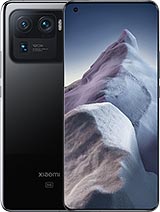
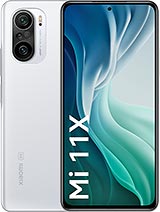
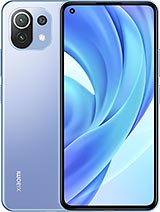

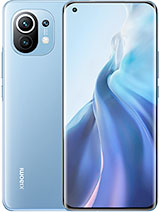
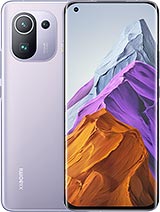
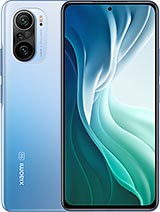

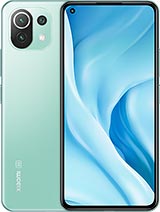
![Meizu 18 Review: True iPhone 12 mini Alternative? [English]](https://img.youtube.com/vi/U5Hf4JcHqm0/maxresdefault.jpg )






















